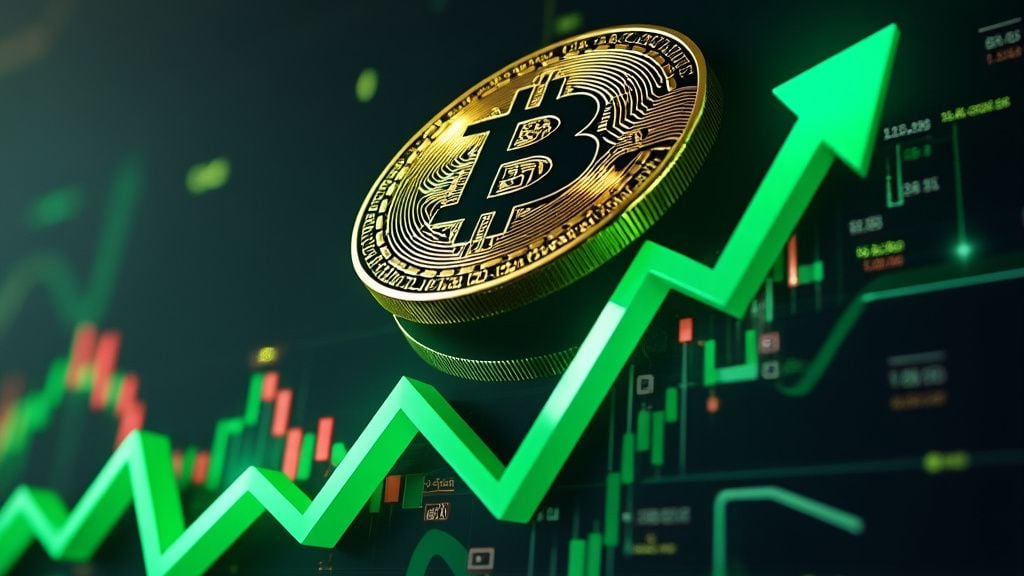-
 Bitcoin
Bitcoin $109,583.2239
0.19% -
 Ethereum
Ethereum $2,583.4612
0.48% -
 Tether USDt
Tether USDt $1.0003
-0.04% -
 XRP
XRP $2.2681
0.70% -
 BNB
BNB $659.9218
-0.52% -
 Solana
Solana $151.4961
-0.37% -
 USDC
USDC $0.9999
-0.02% -
 TRON
TRON $0.2861
1.20% -
 Dogecoin
Dogecoin $0.1718
0.04% -
 Cardano
Cardano $0.5960
-0.07% -
 Hyperliquid
Hyperliquid $40.1233
2.85% -
 Sui
Sui $2.9974
2.48% -
 Bitcoin Cash
Bitcoin Cash $497.1279
-1.76% -
 Chainlink
Chainlink $13.7275
-0.22% -
 UNUS SED LEO
UNUS SED LEO $9.0241
0.70% -
 Avalanche
Avalanche $18.5536
-0.88% -
 Stellar
Stellar $0.2421
1.39% -
 Toncoin
Toncoin $2.8593
-0.51% -
 Shiba Inu
Shiba Inu $0.0...01187
-0.07% -
 Litecoin
Litecoin $90.0023
2.90% -
 Hedera
Hedera $0.1590
2.79% -
 Monero
Monero $322.1495
0.00% -
 Polkadot
Polkadot $3.5453
-1.00% -
 Dai
Dai $1.0000
-0.01% -
 Bitget Token
Bitget Token $4.5733
-1.06% -
 Ethena USDe
Ethena USDe $1.0002
-0.01% -
 Uniswap
Uniswap $7.6345
3.03% -
 Aave
Aave $279.2583
0.47% -
 Pepe
Pepe $0.0...01003
-1.52% -
 Pi
Pi $0.4941
-0.32%
How do bitcoin leveraged contracts calculate gains and losses?
Summary Sentence: The calculation of gains and losses in bitcoin leveraged contracts comprises determining the initial margin, position size, and profit or loss based on price movements, maintenance margin, and stop-loss orders.
Nov 18, 2024 at 05:30 pm

How do bitcoin leveraged contracts calculate gains and losses?
Introduction
Bitcoin leveraged contracts are financial instruments that allow traders to amplify their profits and losses by using borrowed funds. The calculation of gains and losses in bitcoin leveraged contracts involves several key steps that determine the trader's financial outcome. Understanding these steps is crucial for managing risk and maximizing returns in leveraged trading.
Steps involved in calculating gains and losses
- Determining the initial margin:
The initial margin is the amount of funds required to open a leveraged position. It serves as collateral to cover potential losses, and its size varies depending on the leverage ratio and the underlying asset's volatility. A higher initial margin reduces the risk of liquidation but also limits potential profits.
- Calculating the position size:
The position size refers to the amount of bitcoin or other underlying asset that is being traded. It is determined by dividing the initial margin by the leverage ratio. A leverage ratio of 10x, for example, allows a trader to control a position worth 10 times their initial margin.
- Monitoring the market price:
Traders need to closely monitor the real-time market price of the underlying asset to assess their profit or loss position. If the market price moves in their favor, their position gains value, while adverse price movements lead to losses.
- Calculating the maintenance margin:
The maintenance margin is the minimum amount of funds that must be maintained in the trading account to keep the leveraged position open. If the account balance falls below the maintenance margin, the broker may issue a margin call, requiring the trader to deposit additional funds or face liquidation.
- Managing risk through stop-loss orders:
Stop-loss orders are predefined instructions to automatically sell or buy the underlying asset at a specific price level to limit potential losses. They are essential risk management tools that prevent catastrophic losses in volatile market conditions.
- Calculating the profit or loss:
The profit or loss on a leveraged contract is calculated as the difference between the opening price and the closing price multiplied by the position size and the leverage ratio. Profits are realized when the market price moves in the trader's favor, while losses occur when prices move against their position.
- Liquidation
Liquidation occurs when the account balance falls below the maintenance margin and the trader fails to meet a margin call. The broker then forcibly closes the leveraged position at the current market price, resulting in the loss of the trader's initial margin and any unrealized profits.
Conclusion
Calculating gains and losses in bitcoin leveraged contracts requires a systematic approach that involves determining the initial margin, position size, maintenance margin, and managing risk through stop-loss orders. Understanding these steps is essential for traders to make informed decisions, maximize returns, and minimize potential losses in leveraged trading.
Disclaimer:info@kdj.com
The information provided is not trading advice. kdj.com does not assume any responsibility for any investments made based on the information provided in this article. Cryptocurrencies are highly volatile and it is highly recommended that you invest with caution after thorough research!
If you believe that the content used on this website infringes your copyright, please contact us immediately (info@kdj.com) and we will delete it promptly.
- LILPEPE: The Meme Coin Primed for Explosive Growth with Blockchain Tech
- 2025-07-04 08:50:13
- Pyongyang Under Pressure: A Look at US Indictments and North Korean Actors
- 2025-07-04 08:30:12
- Navigating the Murky Waters: Fake JD Stablecoins and Solana Scams
- 2025-07-04 08:50:13
- Robinhood's Risky Game: Fake Tokens, Real Trouble?
- 2025-07-04 09:10:14
- BitMine Stock Skyrockets: Riding the Ethereum Wave to Wall Street Gold
- 2025-07-04 09:10:14
- Shiba Inu's Potential Crypto Rally: Riding the Wave of Price Gains?
- 2025-07-04 09:15:12
Related knowledge

How to identify the contract value range in combination with the market profile?
Jul 02,2025 at 10:56pm
Understanding the Market ProfileTo effectively identify the contract value range in combination with the market profile, it's essential to first understand what each concept entails. The market profile is a framework that helps traders visualize how price and time interact across a given period, typically a trading day or session. It provides insights i...

How to use the price slope to filter the false breakthrough signal of the contract?
Jun 20,2025 at 06:56pm
Understanding the Concept of Price Slope in Contract TradingIn contract trading, especially within cryptocurrency derivatives markets, price slope refers to the rate at which the price changes over a specific time period. It helps traders assess the strength and sustainability of a trend. A steep slope may indicate strong momentum, while a shallow slope...

How to determine the expected volatility of the contract through the volatility cone?
Jun 19,2025 at 12:28pm
Understanding the Basics of Volatility in Cryptocurrency ContractsIn the realm of cryptocurrency trading, volatility is a key metric that traders use to assess potential risk and reward. When dealing with futures contracts, understanding how volatile an asset might become over time is crucial for position sizing, risk management, and strategy developmen...

How to formulate a contract intraday trading plan in combination with the pivot point system?
Jun 21,2025 at 03:42pm
Understanding the Basics of Pivot Points in Cryptocurrency TradingPivot points are technical analysis tools used by traders to identify potential support and resistance levels. These levels are calculated using the previous day's high, low, and closing prices. In the context of cryptocurrency trading, where markets operate 24/7, pivot points help trader...

How to adjust the contract position ratio through the price fluctuation entropy?
Jun 22,2025 at 11:42am
Understanding Price Fluctuation Entropy in Cryptocurrency ContractsIn the world of cryptocurrency futures trading, price fluctuation entropy is a relatively new concept used to measure market volatility and uncertainty. It derives from information theory, where entropy refers to the degree of randomness or unpredictability in a system. In crypto contrac...

How to use the volume swing indicator to predict the contract volume-price divergence?
Jun 18,2025 at 11:42pm
Understanding the Volume Swing IndicatorThe volume swing indicator is a technical analysis tool used primarily in cryptocurrency trading to evaluate changes in volume over time. Unlike price-based indicators, this metric focuses solely on trading volume, which can provide early signals about potential market reversals or continuations. The key idea behi...

How to identify the contract value range in combination with the market profile?
Jul 02,2025 at 10:56pm
Understanding the Market ProfileTo effectively identify the contract value range in combination with the market profile, it's essential to first understand what each concept entails. The market profile is a framework that helps traders visualize how price and time interact across a given period, typically a trading day or session. It provides insights i...

How to use the price slope to filter the false breakthrough signal of the contract?
Jun 20,2025 at 06:56pm
Understanding the Concept of Price Slope in Contract TradingIn contract trading, especially within cryptocurrency derivatives markets, price slope refers to the rate at which the price changes over a specific time period. It helps traders assess the strength and sustainability of a trend. A steep slope may indicate strong momentum, while a shallow slope...

How to determine the expected volatility of the contract through the volatility cone?
Jun 19,2025 at 12:28pm
Understanding the Basics of Volatility in Cryptocurrency ContractsIn the realm of cryptocurrency trading, volatility is a key metric that traders use to assess potential risk and reward. When dealing with futures contracts, understanding how volatile an asset might become over time is crucial for position sizing, risk management, and strategy developmen...

How to formulate a contract intraday trading plan in combination with the pivot point system?
Jun 21,2025 at 03:42pm
Understanding the Basics of Pivot Points in Cryptocurrency TradingPivot points are technical analysis tools used by traders to identify potential support and resistance levels. These levels are calculated using the previous day's high, low, and closing prices. In the context of cryptocurrency trading, where markets operate 24/7, pivot points help trader...

How to adjust the contract position ratio through the price fluctuation entropy?
Jun 22,2025 at 11:42am
Understanding Price Fluctuation Entropy in Cryptocurrency ContractsIn the world of cryptocurrency futures trading, price fluctuation entropy is a relatively new concept used to measure market volatility and uncertainty. It derives from information theory, where entropy refers to the degree of randomness or unpredictability in a system. In crypto contrac...

How to use the volume swing indicator to predict the contract volume-price divergence?
Jun 18,2025 at 11:42pm
Understanding the Volume Swing IndicatorThe volume swing indicator is a technical analysis tool used primarily in cryptocurrency trading to evaluate changes in volume over time. Unlike price-based indicators, this metric focuses solely on trading volume, which can provide early signals about potential market reversals or continuations. The key idea behi...
See all articles

























































































